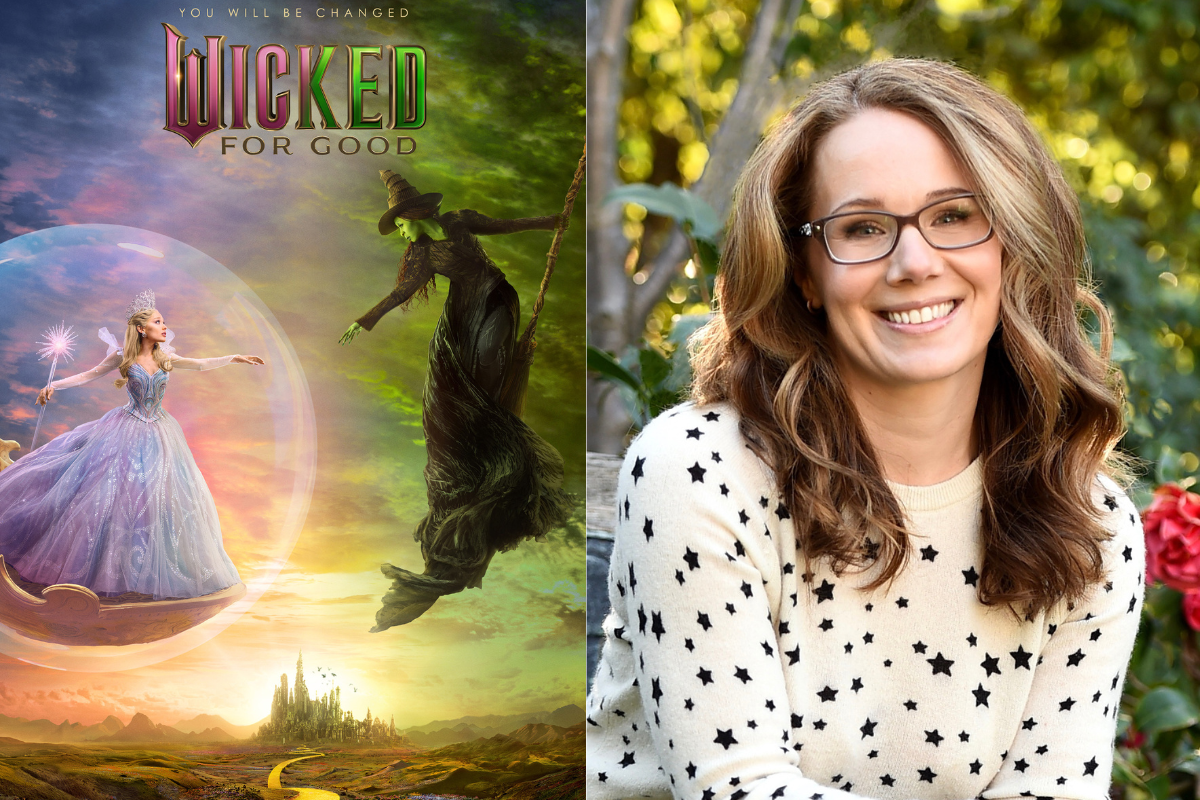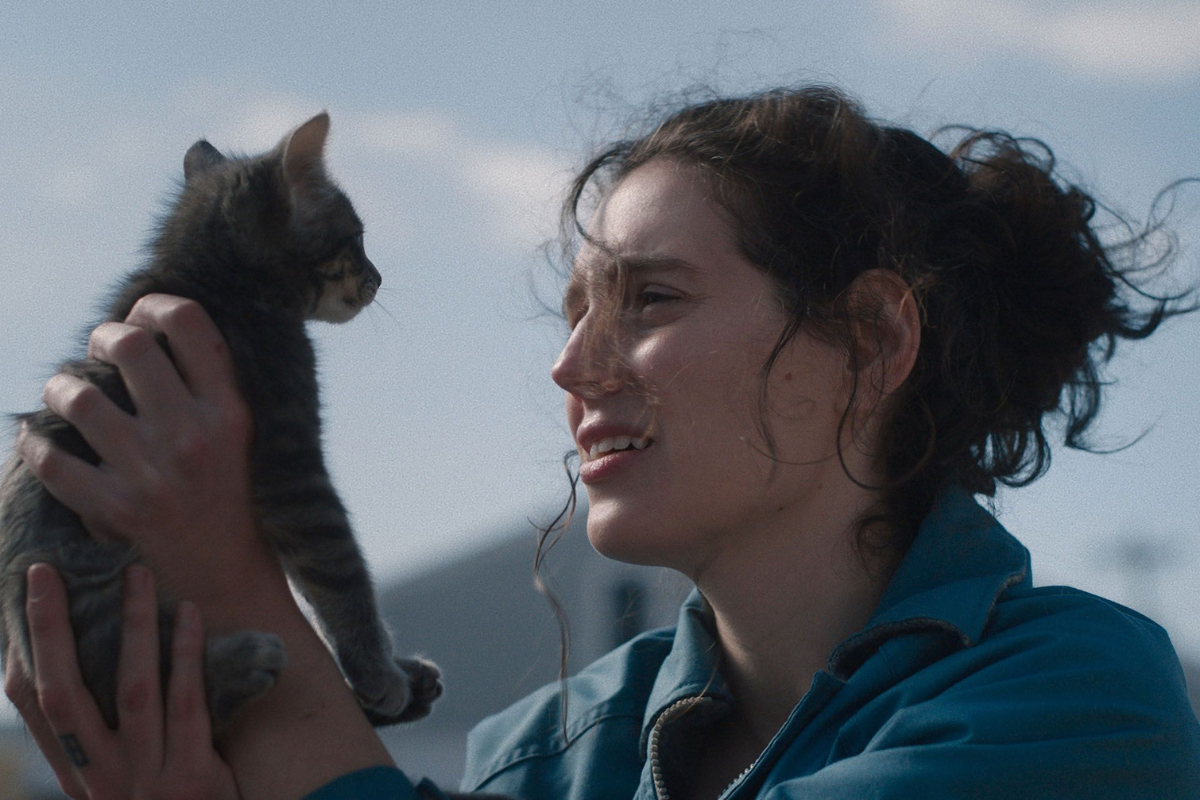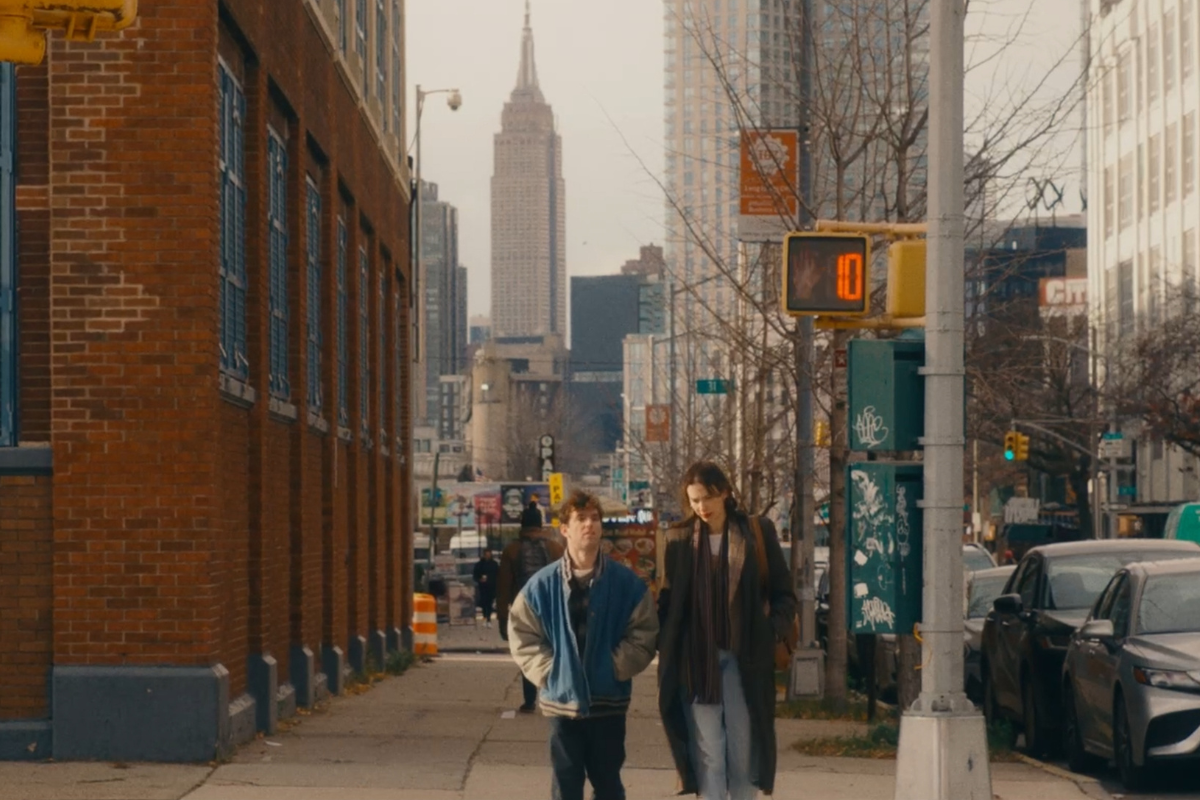INDIE SPOTLIGHT: Interview with ‘Monuments’ Writer/Director Jack C. Newelll
In this interview with writer/director Jack C. Newell, we discuss the heart of the story behind his new film ‘Monuments’, wearing multiple creative hats and his filmmaking influences. Plus, Jack shares advice for multi-hyphenate filmmakers embarking on making their first indie film.
When Laura is killed in an accident, her estranged husband, Ted, wants to honor their time together by scattering her ashes where they first fell in love. But, he’s being chased by her family and the memory of the mistakes he made in life.
In this interview with writer/director Jack C. Newell, we discuss the heart of the story behind his new film Monuments, wearing multiple creative hats and his filmmaking influences. Plus, Jack shares advice for multi-hyphenate filmmakers embarking on making their first indie film.
This interview has been edited for content and clarity
Sadie Dean: I noticed that you had different "story by" credits on the movie, how did this story come across your desk and what made you want to make it into a film?
Jack C. Newell: It starts with a bit of a prologue. I'll try to tell the quicker version of the story. When I was in high school and college, my mom and my brother both passed away in sort of short succession from cancer. This was 10 or 15 years ago, obviously, you could imagine that was life defining events - terrible, awful stuff. OK so fast forward, and I'm getting married and living my life with my now wife Rebecca and my mother-in-law Marianne knows that I'm a filmmaker and she says, “ I wrote a story would you like to read it?” And so I read it, which is about a newly married couple, they're having a conversation about if she died she wanted to be scattered in the museum and when she dies he tries to break into the museum and scatters her ashes. And because I was sort of starting this new life with Rebecca and falling in love and the things that had happened to me when I was younger, the story really connected with me and so I said, “could I take this short story that you wrote and adapt it into a film?” because I think it gives me the structure I need to be able to have a conversation about my experience with loss and grief. It's not always just intense drama that we always see in movies and how it's usually portrayed, there's moments of whimsy and absurdity and funniness and sadness and all of that and so that was sort of the generation point for what became Monuments.
Sadie: And what better way to deal with grief than putting it into a comedy.
Jack: Right. I mean I think so. [laughs]
Sadie: There's definitely a sweetness and innocence to the comedy, and I think it all stems from your characters. How did you know, knowing that this is a very personal story for you, how did you approach the character development and those dynamics?
Jack: Well, that's why then you start to see in the story by, like my wife has a story by credit, Rebecca, she sees everything that I'm making and always gives me feedback and thoughts and I go to her a lot for her point of view. In Monuments, it got to a spot where I went to her like for the millionth time and I was like, “I think you've given me enough feedback here that you should get credited for this because this has gone above and beyond your duty as a wife and supporter.” My process is incredibly iterative and I go through a lot of rewrites and sort of try things out. And so part of it was just the process of writing the script and doing table reads and getting people's feedback and seeing how it sits and trying to find a way. Film is a storytelling art form, it's a communication art form and part of the thing that happens is you have this song to sing in your heart and part of the trick, it’s a whole adaptation translation process from what's inside of you to the final movie. There’s a lot of steps in the process that actually pull you away from trying to tell your story because filmmaking is hard, is the simple version.
Part of it was just trying to continue to make sure that what am I trying to say and how is appropriately getting across and using all the collaborators, whether it be Rebecca or Angie my producer or Matt, who's the production designer, or Stephanie the DP.
Sadie: And with this being an indie film, how did you approach that in terms of writing it and knowing that you're directing and produce it yourself?
Jack: I think that it's really de rigueur. It's very popular these days for there to be the writer-director. In which I think a lot of times it's probably the wrong choice to be completely candid. I think some people need to just write. Some people need to just direct. That maybe is opening up a can of worms. I really just tried to approach it as when I'm writing and really not try to get overly focused on directing on the page. And then sort of an internal crossover moment when we got to a certain period of time before production started where I was like, now I'm the director, I don't care who wrote it, I need to approach this just as a director pushing a script. How do I make it into a movie that I would want to direct? It’s almost a little sleight of hand trick on yourself, just convincing yourself that you're not the writer. I think going back to the earlier thing about are we communicating what we want to communicate out, that's the challenge there. Is this clear? Is this what I was trying to do? It's not really in the writing, how do we get it to where it needs to be? And that starts with my collaboration with the DP and the production designer, and David, Marguerite, Javier, and the entire cast, and just being very open and I would tell them, “I'm not precious about the words, I would love you to say the words as written, but if you have a better idea, I'm all about it.”
Sadie: How many shoot days did you have on this?
Jack: This was a bit of a weird one. We had 20 days of principal photography, and that was shot mostly in Chicago, and the suburbs of Chicago, and then we moved the entire production to Colorado for a week and filmed the end part of the shoot in Colorado. And then we did five more days later of just pickups, so we actually drove back across country again with me and Stephanie and a couple of grips and the set dresser to grab some shots across America basically and some pickups. And then the puppet shoot day was two days on its own too. So, 27 in total but with pretty major breaks in between all those.
Sadie: That's a lot of moving around. Taking a step back, on your filmmaking journey, were you heavily influenced by any specific filmmakers or movies?
Jack: Yeah, so for this one, this is jumping ahead but I think is weird because we had the first cut of the film done and I screened it because I do tons of feedback screenings, and I screened it and at that moment, I'd written it, I'd shot the whole thing and only in that moment after I'd seen the first cut my editor put together I was like, “wow this is a really idiosyncratic movie.” I didn't realize it which is really bizarre. I don't know how I didn't know that. But it started off with the first draft of the script being 70 pages, and it sort of went through a lot of iterations to get it to fill out to 95 or however many pages it became. And then, once we started, we really start saying on the page, here's the story and here's the heart and how do we achieve these things that we want to achieve with it? It's a really, really small story told on a really big canvas, right? It's an epic size and scope but it's really just a story about these two people. I love movies that are older and so we're going for sort of a style of filmmaking that really doesn't happen anymore which is like letting wide shots play more, using production design and costume and locations, and most importantly using music to help with all of that. We’re going for definitely like the David Lean epics like The Bridge on the River Kwai. I tried to keep that in mind, or like Lawrence of Arabia, or maybe early Spielberg or that round of filmmakers in like the 60s-70s. Making movies that they don't make anymore. And then a lot of it was like Kurosawa like the opening of the movie is basically a riff Yojimbo when he enters frame, but our guy comes in, scared and afraid and Yojimbo obviously walks in like a hero, but also the opening track is very reminiscent of the song to Yojimbo if you listen to back. So, pulling from a lot and then also just art, photography and sculpture and Greek myths and all that other stuff.
Sadie: That definitely carries through, I definitely love that dance number because you don't see that in films anymore it's definitely a nice little throwback.
Jack: [laughs] No you don't. I love dance musicals. One of the things we watched during the pandemic was almost all of the Fred Astaire Ginger Rogers musicals, and it definitely helped us get through the pandemic, that's for sure.
Sadie: Any general advice to multi-hyphen filmmakers who are about to set out on making their first indie film?
Jack: Yeah, well, probably don't make Monuments, which is like thousands of locations and cast. I mean if you're writing and directing, I think the thing I said earlier, try to be the best writer you possibly can when you're writing and then hand it over to yourself as director. And then as director, once the realities of production start coming in, be OK and confident in your abilities to rewrite a scene. Even if you’re like, “No, it has to happen here because of these reasons,” we know you know those reasons because you're the writer on it. And sometimes you're like, “well I'm also the director so I'll make it happen” and that's not how it works. Production is hard, so have confidence in yourself that you can rewrite it and keep the core there but make it work for production. Because that's honestly, filmmaking. When it gets down into it, that's really just what it is. Those moments of compromise and how you deal with those moments because they're always going to be those moments. It's how do you deal with those moments creatively, is where your work comes together. It's not in all the other ways, not in most of the ways that I think actually people talk about filmmaking - you know, the lone visionary or the sort of the auteur theory or some of these other things about how to make films - it's really just you're on set, you're behind schedule, you're running out of daylight. What do you do?
Sadie: Get creative and be ready to put out fires constantly. Jack, thanks so much for chatting with me. I very much look forward to what you have next in the pipeline.
Jack: Thank you so much, great to talk with you.
Monuments will be available On Demand and Digital on August 3rd.
Learn more about the craft and business of screenwriting from our Script University courses!
Sadie Dean is the Editor of Script Magazine and writes the screenwriting column, Take Two, for Writer’s Digest print magazine. She is also the co-host of the Reckless Creatives podcast. Sadie is a writer and filmmaker based in Los Angeles, and received her Master of Fine Arts in Screenwriting from The American Film Institute. She has been serving the screenwriting community for nearly a decade by providing resources, contests, consulting, events, and education for writers across the globe. Sadie is an accomplished writer herself, in which she has been optioned, written on spec, and has had her work produced. Additionally, she was a 2nd rounder in the Sundance Screenwriting Lab and has been nominated for The Humanitas Prize for a TV spec with her writing partner. Sadie has also served as a Script Supervisor on projects for WB, TBS and AwesomenessTV, as well as many independent productions. She has also produced music videos, short films and a feature documentary. Sadie is also a proud member of Women in Film.
Follow Sadie and her musings on Twitter @SadieKDean







